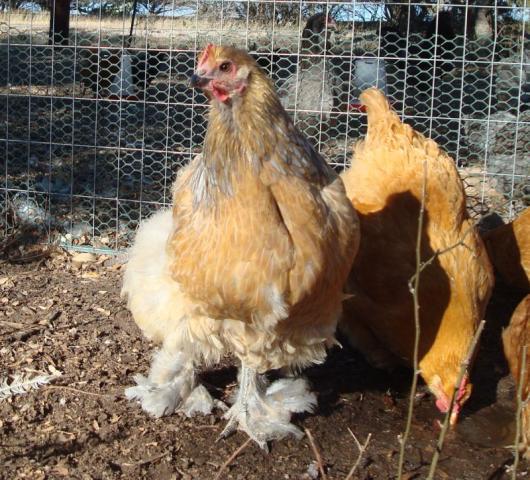Quote:
Both Casey and Coopa are correct about wing "snap." It's about muscle development in the wing. In an Old English Game you want the wing to snap back into place when you let it go after you open it from the body. Cochin bantams don't tend to have that kind of snap to their wings but you don't want them to be sloppy either. A sloppy wing when you open it will most assuredly be carried low. Birds that are accustomed to sleeping on the floors of their pens can be taught to roost. You just have to be willing to go out every night after dark and put them up on the roost until they figure it out. Some figure it out on their own, others need some lessons.
The large fowl don't tend to have as many issues with low wing carriage as the bantams. My large males have very good wing carriage angles. The females in both sizes usually don't have an issue with sloppy wings, and if they do, I'd certainly have to have a real good reason to use them in the breeding pen.
Thanks,Tom
Thanks Tom!

Both Casey and Coopa are correct about wing "snap." It's about muscle development in the wing. In an Old English Game you want the wing to snap back into place when you let it go after you open it from the body. Cochin bantams don't tend to have that kind of snap to their wings but you don't want them to be sloppy either. A sloppy wing when you open it will most assuredly be carried low. Birds that are accustomed to sleeping on the floors of their pens can be taught to roost. You just have to be willing to go out every night after dark and put them up on the roost until they figure it out. Some figure it out on their own, others need some lessons.
The large fowl don't tend to have as many issues with low wing carriage as the bantams. My large males have very good wing carriage angles. The females in both sizes usually don't have an issue with sloppy wings, and if they do, I'd certainly have to have a real good reason to use them in the breeding pen.
Thanks,Tom
Thanks Tom!










